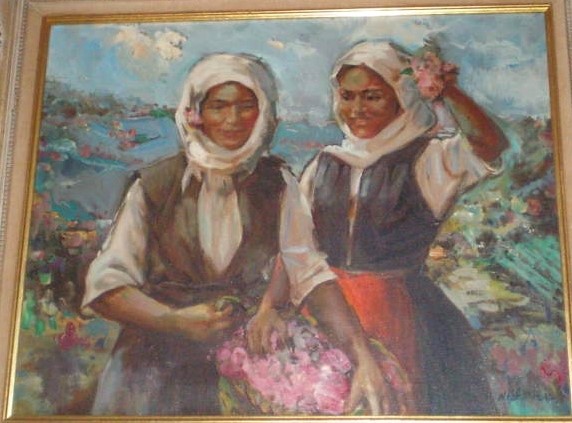Born in Orehovo, Bulgaria in 1913. A participation in a national competition won him a complete five-year scholarship to the Bulgarian Academy of Fine Arts, from which he graduated with highest honors. After graduation Blazev remained in Sofia, Bulgaria working as portrait painter for the diplomatic community until he was drafted into the army in World War II. Throughout the war he was an illustrator in the trenches. After the war artistic freedom came to an end in Bulgaria, which had become a Russian Satellite. After producing a seemingly unending series of portraits of Stalin, Marx and Engels, Nicola Blazev escaped into Yugoslavia /Macedonia in 1948.
In Macedonia, Blazev and other artists from Stalinist regimes enjoyed relative freedom for their work until the diplomatic rapprochement between Tito and Krushchev in 1954 forced him into another escape. With his five year old daughter, Angelka, into Italy, where they lived and he painted for five years in a refugee camp near Trieste.
Nicola and Angelka finally arrived in New York City in 1959. Blazev painted quite successfully there for the next six years. In 1965 he opened his summer gallery in Rockport, MA. In 1974 he made study trip to Paris. Blazev’s paintings have been exhibited at The Doll & Richards Gallery in Boston, The Huber Gallery in Miami, The Caravel Gallery in New York City, Mayfair Gallery in Scotia, New York among others.
Stories
Camels in Skopje
It is May 14, 2019. I woke up with a new message from my “Macedonian art” internet search queries. The Hungarian auction house BÁV Zrt
